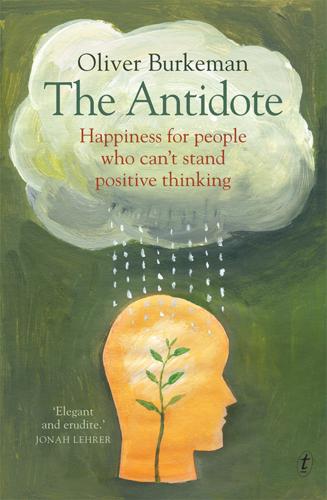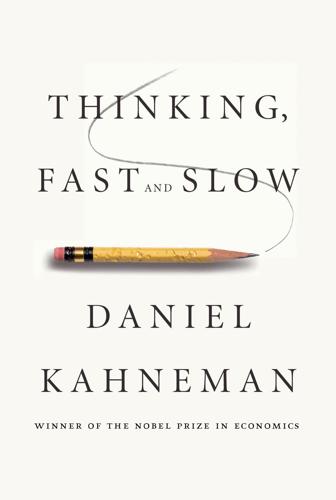
The Antidote: Happiness for People Who Can't Stand Positive Thinking
by
Oliver Burkeman
Published 1 Jul 2012
The psychologist Dorothy Rowe argues: In Tim Lott, ‘Why Uncertainty is Good for You’, The Sunday Times, 24 May 2009. Here are the words of one blogger: See David Cain, ‘How To Get Comfortable Not Knowing’, at www.raptitude.com/2009/06/how-to-get-comfortable-not-knowing the economist Colin Camerer and three of his colleagues: Colin Camerer et al., ‘Labor Supply of New York City Cabdrivers: One Day at a Time’, Quarterly Journal of Economics 112 (1997): 407-41. a 2009 paper with a heavy-handed pun for its title: Lisa Ordóñez et al., ‘Goals Gone Wild: The Systematic Side-effects of Overprescribing Goal-setting’, Academy of Management Perspectives 23 (2009): 6-16. One illuminating example of the problem: My account of GM’s ‘twenty-nine’ campaign is drawn from Sean Cole, ‘It’s Not Always Good To Create Goals’, from the website of the American Public Media radio show Marketplace, accessible at www.marketplace.org/topics/life/its-not-always-good-create-goals, and Drake Bennett, ‘Ready, Aim … Fail’, Boston Globe, 15 March 2009.

Misbehaving: The Making of Behavioral Economics
by
Richard H. Thaler
Published 10 May 2015
“The CAPM Is Wanted, Dead or Alive.” Journal of Finance 51, no. 5: 1947–58. ———. 2014. “A Five-Factor Asset Pricing Model.” Working paper, Fama–Miller Center for Research in Finance. Available at: http://ssrn.com/abstract= 2287202. Farber, Henry S. 2005. “Is Tomorrow Another Day? The Labor Supply of New York City Cabdrivers.” Journal of Political Economy 113, no. 1: 46. ———. 2008. “Reference-Dependent Preferences and Labor Supply: The Case of New York City Taxi Drivers.” American Economic Review 98, no. 3: 1069–82. ———. 2014. “Why You Can’t Find a Taxi in the Rain and Other Labor Supply Lessons from Cab Drivers.”

Model Thinker: What You Need to Know to Make Data Work for You
by
Scott E. Page
Published 27 Nov 2018
Bush, Robert, and Frederick Mosteller. 1954. Stochastic Models for Learning. New York: John Wiley and Sons. Camerer, Colin F. 2003. Behavioral Game Theory: Experiments in Strategic Interaction. Princeton, NJ: Princeton University Press. Camerer, Colin, Linda Babcock, George Loewenstein, and Richard Thaler. 1997. “Labor Supply of New York City Cabdrivers: One Day at a Time.” Quarterly Journal of Economics 112, no. 2: 407–441. Camerer, Colin, and Tek Ho. 1999. “Experience-Weighted Attraction Learning in Normal Form Games.” Econometrica 67, no. 4: 827–874. Camerer, Colin, George Loewenstein, and Drazen Prelec. 2005. “Neuroeconomics: How Neuroscience Can Inform Economics.”

Thinking, Fast and Slow
by
Daniel Kahneman
Published 24 Oct 2011
biologically significant improvement: Michel Cabanac, “Pleasure: The Common Currency,” Journal of Theoretical Biology 155 (1992): 173–200. not equally powerful: Chip Heath, Richard P. Larrick, and George Wu, “Goals as Reference Points,” Cognitive Psychology 38 (1999): 79–109. rain-drenched customers: Colin Camerer, Linda Babcock, George Loewenstein, and Richard Thaler, “Labor Supply of New York City Cabdrivers: One Day at a Time,” Quarterly Journal of Economics 112 (1997): 407–41. The conclusions of this research have been questioned: Henry S. Farber, “Is Tomorrow Another Day? The Labor Supply of New York Cab Drivers,” NBER Working Paper 9706, 2003. A series of studies of bicycle messengers in Zurich provides strong evidence for the effect of goals, in accord with the original study of cabdrivers: Ernst Fehr and Lorenz Goette, “Do Workers Work More if Wages Are High?